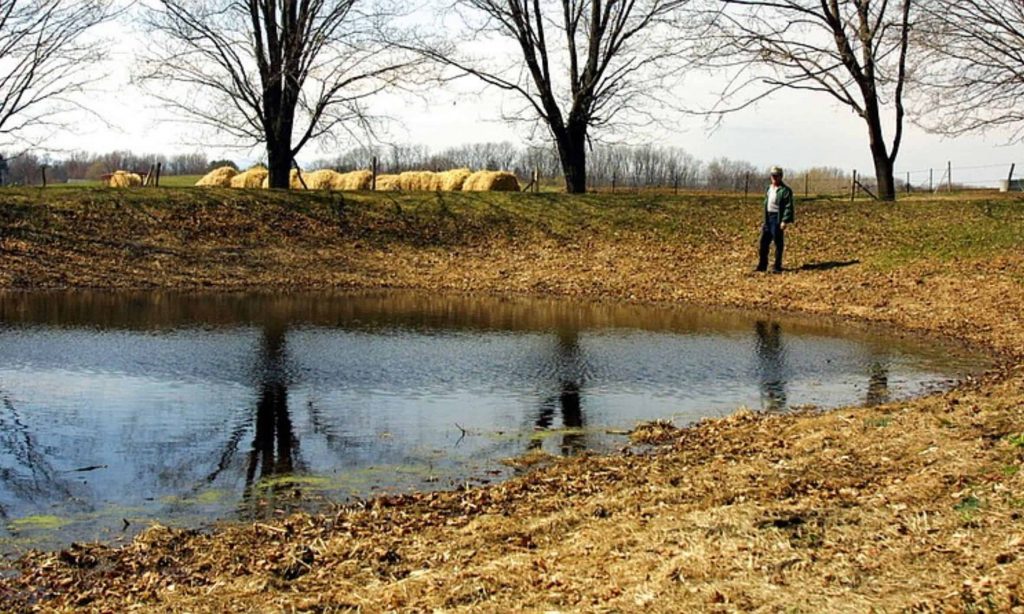
In his opinion blocking a federal regulation protecting bodies of water, U.S. District Judge Daniel Hovland recognized the confusion in recent years surrounding the rule.
The “waters of the United States” definition under the Clean Water Act clarifies the waterways and wetlands under federal protection, but as Hovland noted in his decision last Wednesday, there has been “an endless stream of lawsuits and legal challenges” surrounding regulations.
States and industry groups challenged a 2015 definition that expanded the waters under federal protection. The Trump administration replaced the regulation with the Navigable Waters Protection Rule narrowing protections, but federal courts rejected those standards.
“Suffice it to say the Clean Water Act, and the varied and different definitions of ‘waters of the United States,’ have created nothing but confusion, uncertainty, unpredictability, and endless litigation throughout this country to date,” wrote Hovland, who serves in the district of North Dakota.
Hovland’s decision added to the debate surrounding the current waters of the United States (WOTUS) rule, which the Biden administration announced last December. Arkansas and 23 other states secured a preliminary injunction blocking the regulation amid an ongoing lawsuit challenging the rule. A federal judge in Texas last month blocked the definition from taking effect in Texas and Idaho.
“If you look at the complaints that were filed by the states in this North Dakota case and in the Texas case, they’re making the same arguments,” said Brigit Rollins, a staff attorney at the nonpartisan National Agricultural Law Center in Fayetteville.
“These are arguments that come up a lot in the WOTUS debate. These are not new arguments that the states are bringing up, particularly because of this rule. We see these a lot.”
The U.S. Environmental Protection Agency and the Army Corps of Engineers announced the latest “waters of the United States” definition last December with nationwide implementation to take effect March 20. Citing confusion surrounding previous rules, officials based the latest definition on the “waters of the United States” rule in effect from 1986 to 2015. The rule additionally incorporates precedent from a 2006 U.S. Supreme Court case regarding actions affecting downstream waters and wetlands connected to a protected waterway.
Lawmakers and agricultural organizations were quick to criticize the rule, arguing the definition grants federal agencies excessive regulatory authority.
Rollins said another issue evaluated by lawmakers and courts regards navigable waters — or bodies of water allowing interstate and foreign commerce — under the Clean Water Act.
“How far Congress meant for WOTUS to extend beyond traditional navigable waters is sort of that struggle at the heart of trying to define WOTUS, and we see that in these decisions,” she said.
“There was kind of this look at this idea that WOTUS, this new rule, includes intrastate waters, and that’s something the judges have zeroed in on, saying, ‘We think that this reads navigability out of WOTUS by including all intrastate waters that perhaps cannot be used to facilitate interstate commerce or foreign commerce, and would therefore fall outside of that commerce clause authority.'”
In his opinion, Hovland stated the rule does not provide landowners with clear definitions of waters affected by the federal definition. He described the agencies’ determinations as “unintelligible and provide little guidance to parties impacted by the regulations.” Hovland and U.S. District Judge Jeffrey Vincent Brown of Texas expressed concerns about the broadness in determining the waters affected by the “waters of the United States” rule.
West Virginia is leading the states’ challenge in the North Dakota federal court. Arkansas Attorney General Tim Griffin called last week’s decision a “win for every Arkansas landowner.”
The EPA said in a statement that officials are reviewing Hovland’s decision to determine the best options regarding water protections.
“The agencies remain committed to establishing and implementing a durable definition of ‘waters of the United States’ informed by diverse perspectives,” the EPA said. “Our goal is to protect public health, the environment, and downstream communities while supporting economic opportunity, agriculture, and industries that depend on clean water.”
For states where the recent rule is not in effect, officials will follow the rule and government orders made before the 2015 change. Officials had been using this guidance leading up to the recent “waters of the United States” definition taking effect.
The U.S. Congress has already voiced its opposition to the latest rule; the U.S. Senate and the House of Representatives passed a congressional resolution nullifying the definition with a handful of Democrats joining Republican colleagues on the votes.
President Joe Biden vetoed the legislative action.
Republican Reps. Rick Crawford of Jonesboro and Bruce Westerman of Hot Springs sponsored the House version of the resolution. Republican Sens. John Boozman of Rogers and Tom Cotton of Little Rock were sponsors of the Senate version.
“Both Presidents Obama and Biden have tried to seize from [the] state and localities, the regulation of ever-smaller wetlands, streams, ponds, and periodic sources of water,” Crawford said in a statement. “This radical power grab for federal control would mean higher prices for agriculture products, as well as environmentalist vetoes over private land use, all without making our water cleaner.”
Westerman, the House Natural Resources Committee chairman, also celebrated Hovland’s decision.
“Arkansas farmers, small businesses, and landowners can sleep better knowing that they will not be impacted by the flawed WOTUS rule for the time being,” he said.
Rep. Steve Womack, R-Ark., criticized the Biden administration for the definition, arguing agencies pitch rules while failing to have “any experience or any basis for its legitimacy.”
“A lot of these are just good ideas that emanate from a very hyper-regulatory organization, and they just test the limits to see how far they can go with this stuff,” the Rogers lawmaker told the Arkansas Democrat-Gazette. “Frankly, when they go too far, it’s going to raise the ire of a lot of people that are impacted by it.”
The American Farm Bureau Association, the National Cattlemen’s Beef Association, the National Pork Producers Council, and the U.S. Poultry and Egg Association were among the parties that intervened in the North Dakota lawsuit in support of the states.
“Particularly, when it concerns farming, there is not a better conservation-minded people than today’s American farmer,” Womack said. “They live off the land. That’s their enterprise. They have to have the land in order to do what they do.”
Evan Teague, vice president of environmental issues with the Arkansas Farm Bureau, struck a similar message in a statement on the preliminary injunction.
“We stand firm in our belief that no one understands and protects the environment better than the farmers and ranchers who rely on water for food production every day,” he said. “This is not an issue of regulation vs. non-regulation. It is about who is regulating: Washington bureaucrats or folks closer to home who have a practical understanding of these issues and are directly accountable to the people whom they serve.”
Hovland’s decision coincides with building anticipation regarding how the U.S. Supreme Court may affect water protections in the coming months. Justices heard oral arguments last October regarding an Idaho couple’s efforts to build near wetlands that federal officials determined are protected. The Supreme Court is expected to issue a decision by the end of its term this June.
Hovland expressed hope the Supreme Court will provide clarity on water protections.
“Until then, every state will continue to swim in waters of uncertainty, ambiguity, and chaos,” he added.
Crawford and Westerman said they want the Supreme Court to issue a ruling addressing the federal government’s regulatory authority over waters. Womack noted the Supreme Court’s responsibilities involve adjudicating regulatory disputes.
“I’m a limited government sort of guy,” he said. “I think, sometimes, we ask the federal government to do things for us that don’t really need to be done.”
Rollins has doubts about the Supreme Court resolving the debate surrounding water protections. She mentioned opinions from the 2006 Supreme Court case as an example; by justices mentioning downstream waters and nexuses to protected water bodies, federal agencies had vague guidelines on implementing regulations.
“For the foreseeable future, for our lifetime, there’s probably not going to be an end to some kind of legal dispute over the best way to regulate water,” she said. “That’s how government works, that’s how people work. We’re all trying to figure out what’s the best way to do this.”


















